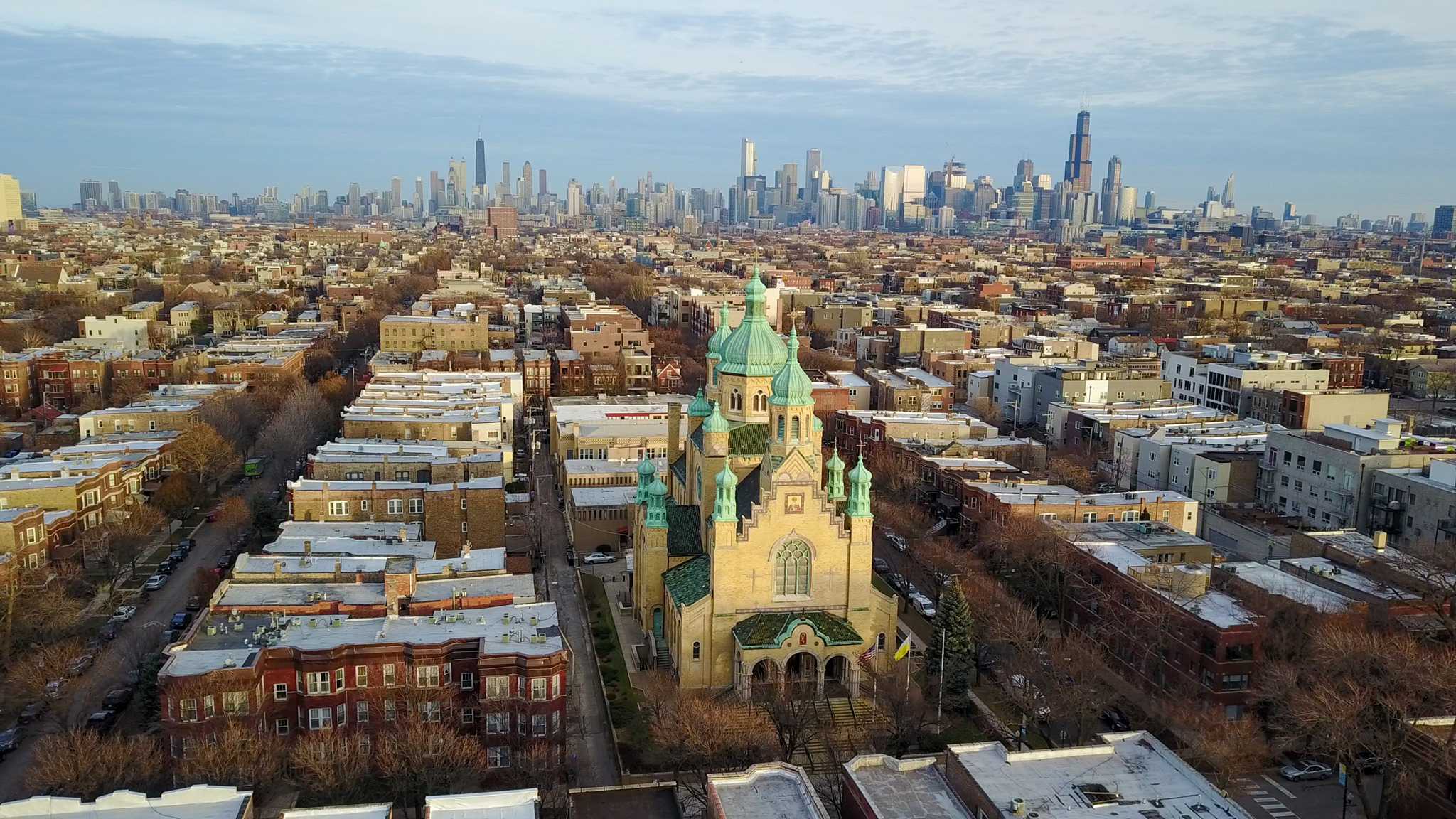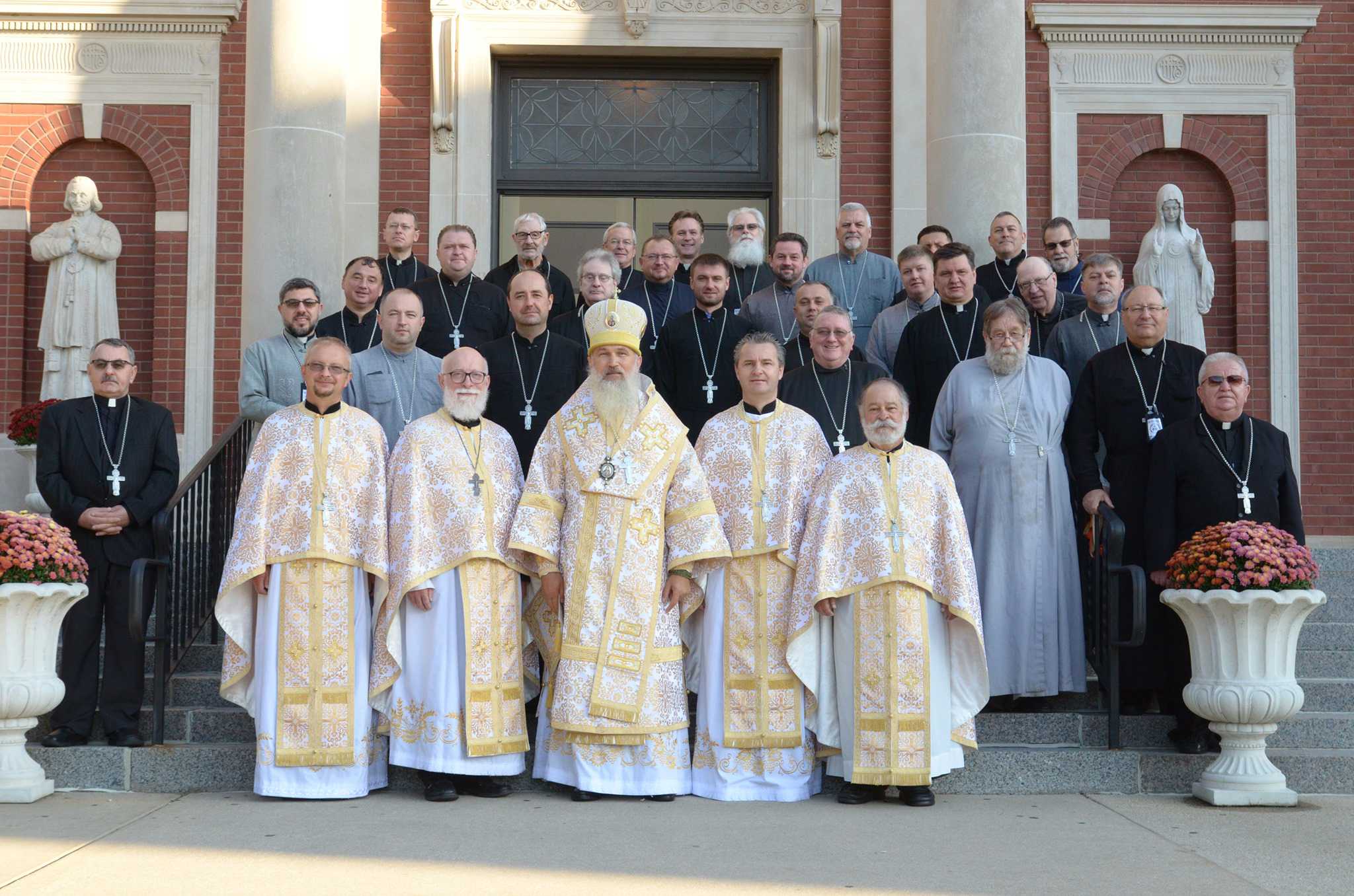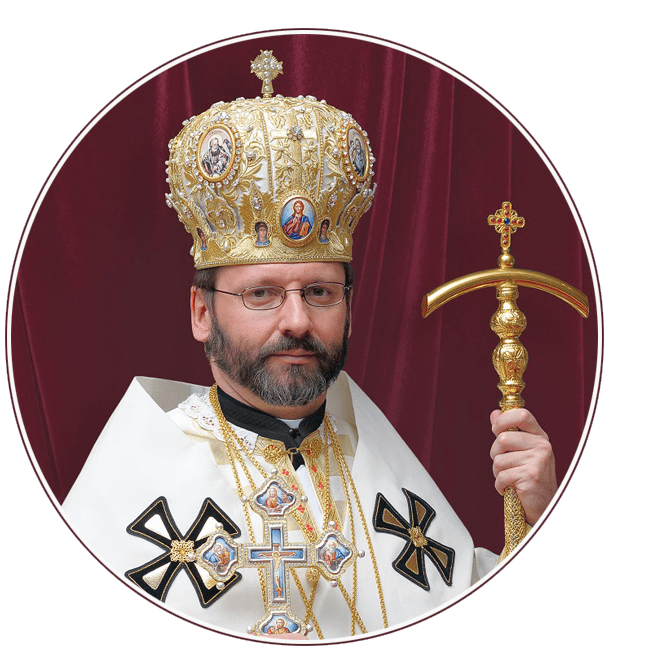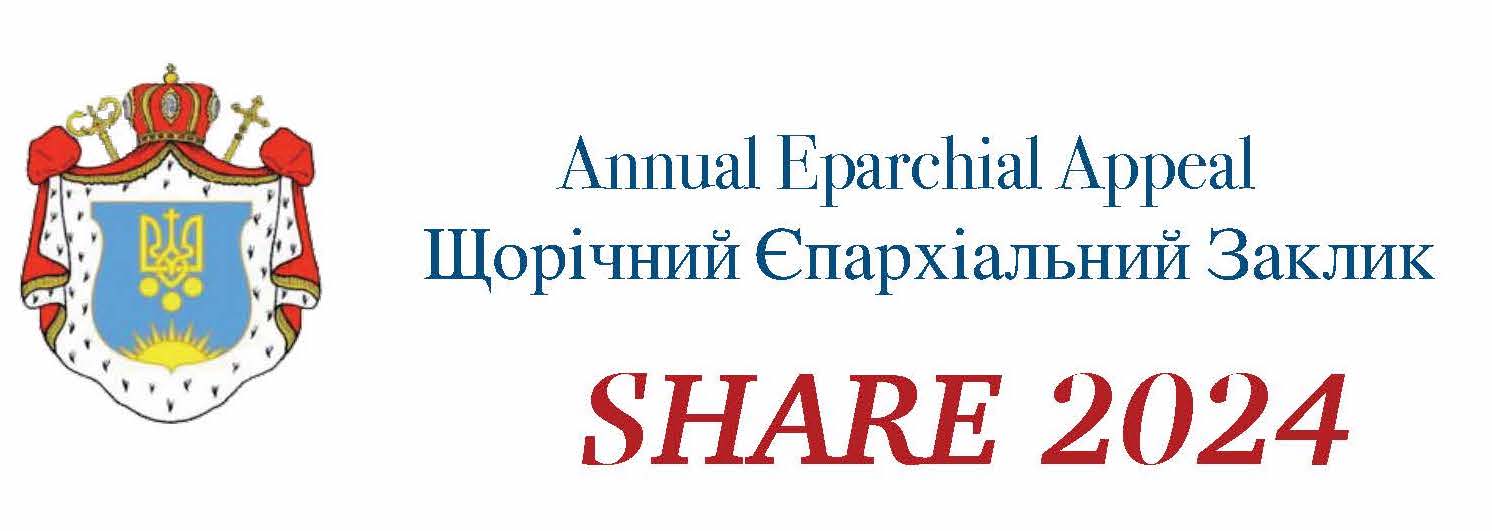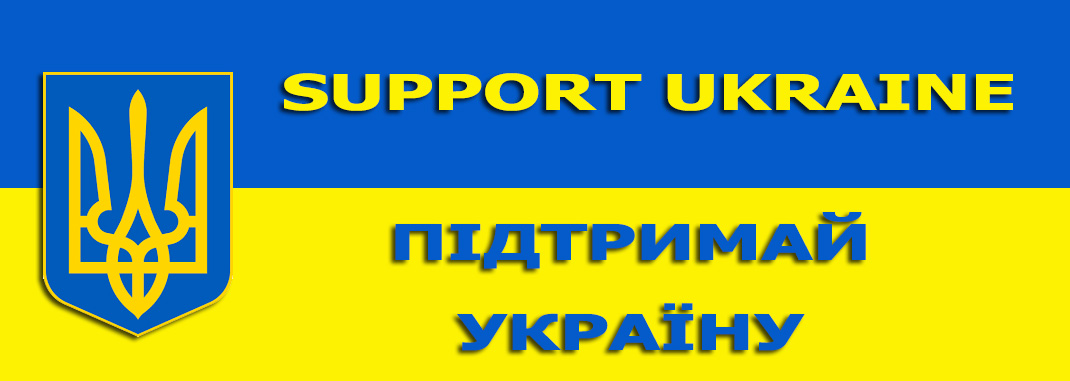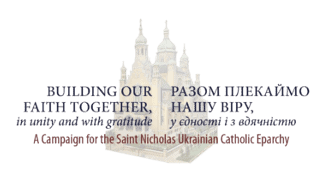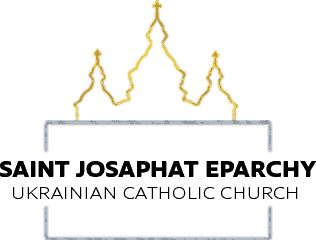The Feast of the Annunciation of the Most Holy Mother of God

"With the voice of the Archangel we cry
out to you, O Most Pure One: 'Rejoice,
O full of grace, the Lord is with you.’”
(Hymn of Praise of the Feast)
“Today is the beginning of our salvation and the revelation
of the eternal mystery: the Son of God becomes the Son of a Virgin.” (Troparion of the Feast). Thus, with a song of praise our Church greets the feast of the Annunciation of the Most Holy Mother of God, calling it the beginning of our salvation. And justifiably, for this feast is one of the most important feasts of our Ecclesiastical Year. The very title of the feast, found in our liturgical books, indicates its importance: “The Annunciation of our Most Holy Queen, the Mother of God and Most Pure Virgin Mary.”
St. Athanasius the Great (+373), in his sermon on the Annunciation, calls this feast the first in the list of feasts, for it begins the work of salvation of the human race. The basis for this feast is the joyful annunciation recorded in St. Luke (1, 26-38). The Annunciation is first in a whole series of great mysteries in the life of Jesus Christ and his Most Holy Mother. The feast of the Annunciation is not only one of the twelve greatest feastdays of our Church, but its service is taken even if it should fall on Palm Sunday, Great Friday or on the feast of the Resurrection (Easter day).
The Significance of the Mystery of the Annunciation
The mystery of the Annunciation has fundamental significance, for with it begin the New Testament and our salvation. Mankind had waited thousands of years for the good news of the Archangel concerning the incarnation of the Son of God. Heaven, earth, and the righteous souls in limbo awaited this good news. On this day God fulfilled his promise to send a redeemer, for on this day the “Word was made flesh and dwelt among us.” (John 1,14) In a sermon on the Annunciation, attributed to St. John Chrysostom, we read: “Gabriel was sent to reveal the salvation of the world. Gabriel was sent to bring to Adam the promise of his return from slavery to sin. Gabriel was sent to the Virgin, to restore the honor of womanhood. Gabriel was sent to prepare a worthy bridal chamber for the pure Bridegroom. Gabriel was sent to espouse creature with the Creator. Gabriel was sent to the living palace of the King of angels. Gabriel was sent to the Virgin betrothed to Joseph, but preserved for the Son. The bodiless servant was sent to the pure Virgin. The one who was free from sin was sent to one exempt from corruption. A lamp was sent to point out the Sun of truth. Morning was sent to precede the light of day. Gabriel was sent to announce Him, who is in the bosom of the Father and in the arms of the Mother. Gabriel was sent to announce Him, Who is seated on a throne at God’s right hand and, at the same time, rests in a lowly manger on earth.” (Works, Vol. 8, p. 854)
In the instruction which the Prologue gives for this day, we read the following concerning the significance of the mystery: “Today the Son and Word of God, Lord and God, silently places himself in the womb of the Virgin, desiring by his incarnation to deify man and the work of his hands, and to lead him back to the ancient paradise. Today the Uncreated dwells in his creature. Today the invisible becomes visible. Today the inaccessible One is conceived in the virgin womb and becomes eminently accessible. Today the Word of God receives a body, the Son of God becomes the Son of a Virgin... Today the gates of paradise are opened, and the fiery sword that drove our first parents from Paradise is quickly withdrawn and the human race, through faith in Christ and good deeds, again enters into paradise with joy. Today Adam rejoices, having received into his nature his Creator. Today Eve, having crushed the head of the serpent, her implacable tempter, calls upon the whole world to rejoice, saying: “Rejoice with me, for today we have found inexpressible joy and deliverance from all sin.”
At the moment of the angel’s annunciation, the Son of God begins the first moments of earthly life in the womb of the Most Pure Virgin Mary. From this momentous fact the privileges of Mary — those of divine motherhood and virginity — clearly emanate.
The History of the Feast
The celebration of the feast of the Annunciation began in the Eastern Church at the end of the fourth or the beginning of the fifth century. Emperor Mauricius (582-602) made this feast obligatory throughout the entire empire. At first, both in the East and the West, it was considered a feast of the Lord as is evident from the names by which it was first known: “The Conception of Christ”, “The Annunciation concerning Christ”, “The Beginning of Redemption”, “The Annunciation”, “The Annunciation of the Angel to Mary”, “The Day of the Salutation”, “The Day or Feast of the Annunciation”. In the seventh century, the name was formally established for the entire Eastern Church as “The Annunciation of the Most Holy Mother of God”, and it was decreed that this feast be celebrated as a Marian feast.
The date, March 25, was selected for this feast because it occurs just nine months before the feast of the Nativity of our Lord on December 25. In addition to this, there existed an ancient tradition that March 25th marked not only the incarnation of the Son of God, but also both the creation of the world and the death of Christ on the Cross. The Alexandrian Paschal Chronicle of 624, and also the Paschal Chronicle of Constantinople, from the start of the seventh century, places the feast of the Annunciation on the 25th of March.
The liturgy for this feast was composed by St. John Damascene, St, Cosmas of Maiuma, Theophane, Bishop of Nicea and the monk John. On the day following the feast, the Eastern Church celebrates the “Synaxis of St. Gabriel Archangel”. This is an ancient custom of the Eastern Church to pay honor after some great feast to those persons who had played an outstanding role in the event celebrated by the feast.
The feast of the Annunciation came to the West from the East somewhere between the years 660 and 680. Just as in the East, so here too, it was at first considered a feast of the Lord and had various names, such as: “The Lord’s Annunciation”, The Conception of Christ”, “The Feast of the Incarnation”, “The Annunciation of the Angel to the Most Pure Virgin Mary”, “The Annunciation of Holy Mary concerning the Conception”. The Council of Toledo in the year 656 speaks of the Annunciation as being celebrated on the 25th of March, but transfers it to the 18th of December. The reason for this was that according to an ancient tradition no feast could be celebrated during the Great Fast, and also because it seemed fitting that the feast of the Annunciation be closer to the feast of the Nativity of Christ than to the death and Resurrection. Not until the eleventh century did all the Churches in the West again begin to celebrate the Annunciation on the 25th of March. The Armenians observe the Annunciation on the 7th of April because they observe the Nativity of Christ and the Theophany together on the same day, the 6th of January. The event of the Annunciation is a cherished theme in iconography.
The feast of the Annunciation in Rus-Ukraine was the second Marian feast after the Assumption, to which a church in Kiev was dedicated in the first century of Christianity. Prince Jaroslav the Wise built a church upon the golden gates in Kiev in honor of the Annunciation of the Most Holy Mother of God. “In the year 1037,” says our oldest chronicle, “Jaroslav founded the great city of Kiev, which has golden gates. He also built the church of St. Sophia (the Wisdom of God), which was the church of the Metropolitan and then built the stone church of the Annunciation of the Holy Mother of God upon the golden gates. The most wise Prince Jaroslav built the church of the Annunciation upon the Golden Gates so that joy may always reign in the city through the Annunciation of the Lord and the Prayer of the Mother of God and Archangel Gabriel.’’ In the church of the Annunciation, Prince Jaroslav the Wise consecrated the whole Ukrainian nation to the patronage of the Mother of God in 1037.
The Spirit of the Service of the Feast of the Annunciation
The liturgy of this feast is filled with glorious and joyful hymns. The well known greeting of the angel is repeated numerous times: “Rejoice!” The reason for this holy and unearthly joy is the incarnation of the Son of God, the privilege of the Divine Motherhood and Virginity of Mary, and the redemption of mankind. Heaven, earth and all creation share in the joy of the Annunciation. “Today is the joyous Annunciation,’’ we sing at the aposticha of Vespers, ‘‘the feast of virginity. The creatures of earth unite with those of heaven. Adam is renewed and Eve is freed from her ancient sorrow...” The second Sessional Hymn of Matins says: “Today all creation rejoices, for the Archangel says to you: You are the blessed, precious and most Pure Mother of Christ God...” The Canon of the Matins services is unique in that it is arranged in the form of a dialogue between the Most Holy Mother of God and the Archangel. For example: “The Mother of God: — ‘Having heard the joyful voice of your words, Gabriel, I was filled with divine joy, for you proclaim joy and announce infinite happiness.’” “The Angel: — ‘To you is imparted joy, 0 divine Mother of God. All creation, O Virgin of God, cries out to you: Rejoice! For you, the only Pure One, was chosen as the Mother of the Son of God.’” (Ode 6)
The Angel speaks to the Most Holy Mother of God with the deepest respect and has for her, the Mother of God, the highest words of praise and admiration: “Gabriel stood in your presence, O handmaiden, and revealed the eternal plan to you. He greeted you and announced: ‘Rejoice, O unseeded earth. Rejoice, 0 unbumt bush, 0 unfathomable abyss. Rejoice, O bride which leads to heaven, O high ladder which Jacob saw. Rejoice, 0 vessel of divine manna. Rejoice, 0 Deliverer from the curse. Rejoice, O salvation of Adam. The Lord is with you!’” (Vespers — stichera for Psalm 140)
The chief source of this joy is the incarnation of the Son of God and our salvation: “... The virginal womb receives the Son, the Holy Spirit is sent down, and the Father on high is well pleased. Through the universal will, reconciliation is effected for all. Let us, who have been saved in it and through it, sing with Gabriel to the Virgin: Rejoice, O full of grace. For our salvation, Christ our God took our human nature from you and joined it to himself. Therefore, implore him to save our souls.” (Stichera of the Aposticha in Vespers)
Source: A Byzantine Rite
by Julian J. Katrij, OSBM




